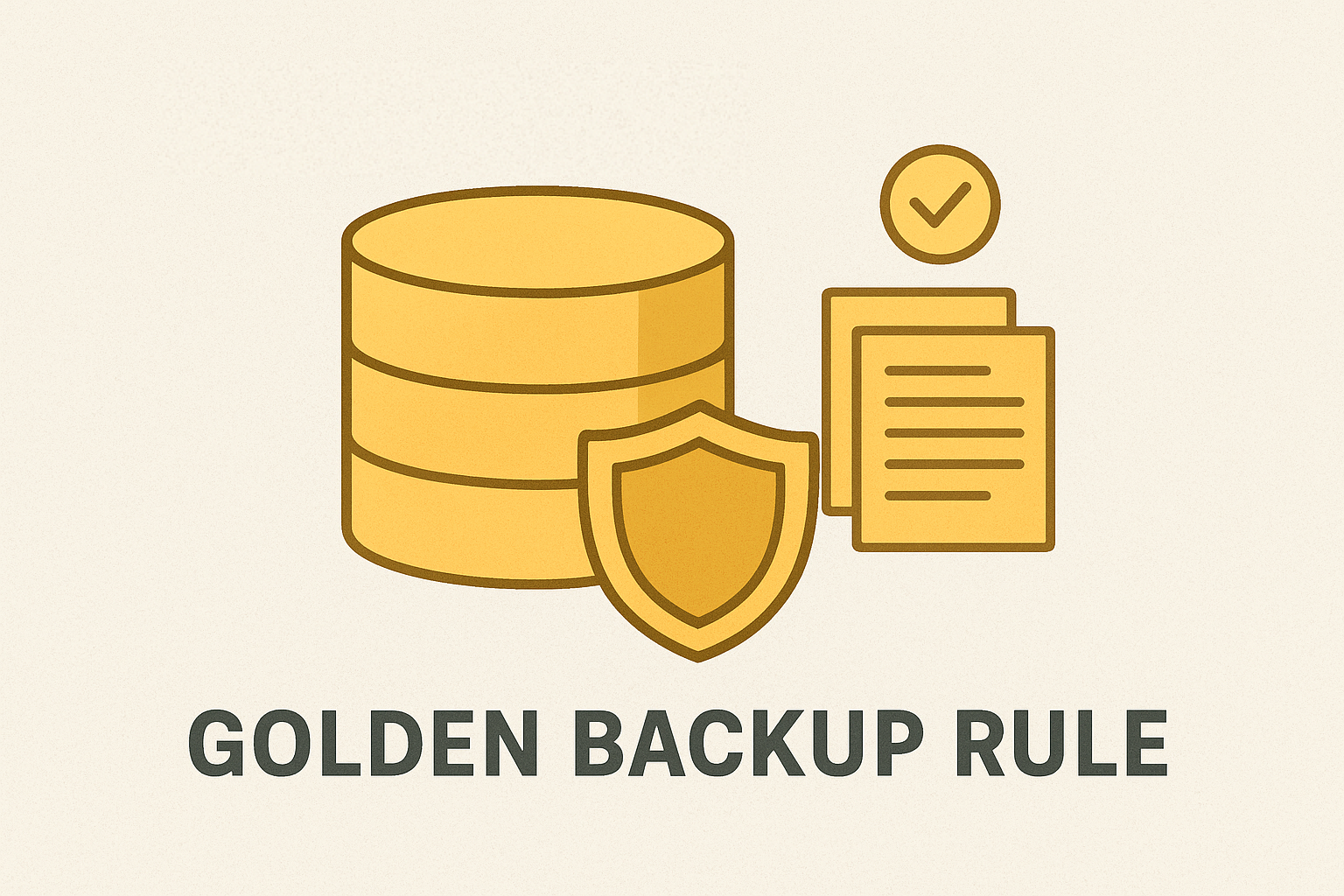In a time of escalating intelligent ransomware threats and stringent compliance expectations, a resilient backup strategy is non‑negotiable. This post walks through how Oracle Autonomous AI Database evaluates against the industry-popular 3‑2‑1‑1‑0 Golden Backup Rule. You’ll get a clear picture of which safeguards ADB‑S provides out of the box—encryption, automation, and immutable backups—and where enabling features like cross‑region protection and routine restore tests can further harden your posture.

Whether you’re validating controls for audit readiness or simply optimizing for rapid recovery, below is a practical, security-minded assessment of the Golden Backup Rule and best practice for ensuring your Oracle Autonomous AI Database Serverless (ADB‑S) meets it.
First, let’s break down and understand what each number refers to in this Golden Backup Rule,
-
3: Keep at least three copies of your data — the original data plus two backup copies.
-
2: Store those backups on at least two different types of media or storage environments (e.g., local disk and cloud storage) to reduce the risk of simultaneous failure.
-
1: Keep at least one backup copy off-site (geographically separate) to protect against physical disasters like fire, flood, or theft.
-
1: Maintain at least one immutable or offline backup copy, which means a backup that cannot be modified or deleted, protecting against ransomware and insider threats.
-
0: Ensure that there are zero errors in your backups by regularly verifying and testing your backups to confirm they can be restored successfully without issues.
Oracle’s Autonomous AI Database satisfies much of this criteria out of the box, and for your most critical databases, enabling additional backup features with a few clicks fully adheres to the Golden Backup Rule. Note that all of these backup features (mirroring, encrypting, validating etc.) are fully managed for you by Oracle, in Autonomous AI Database.
Here’s a detailed breakdown of each backup requirement and how ADB is configured to meet it:
3 — Keep at least three copies
Backups on ADB-S are triple-mirrored, which means Oracle actually does better here and keeps four copies (the original data + triple mirrored backups) of your database at any given time.
2 — Use at least two different media/platforms
Your Primary data lies on Autonomous AI Database storage, while backups are securely stored on cloud object storage (a different storage class).
1 — Keep one copy geographically offsite
By default automatic backups are taken in the same local region. To meet this requirement for your most critical databases, enable a disaster recovery peer with 7 days of cross-region replicated backups as described in the documentation here.
1 — Keep one copy immutable or offline
Backups on Autonomous AI Database are immutable by default in cloud storage and cannot be modified in any way. For complete backup ransomware protection on your critical database, you may also lock the backup retention period on your database, making the retention period immutable as well.
0 — Zero errors via testing and validation
Autonomous AI Database fully manages your backups, and includes encryption at rest and routinely validating your backup checkums.
In addition to Oracle’s automated validation, you may test your backups on a monthly or quarterly basis, as your organization sees fit, by cloning or restoring from any of the available backups to validate your data.
——–
By combining Oracle Autonomous AI Database’s built-in automation, triple-mirroring, immutable backups, and cross-region replication options, organizations can confidently achieve full compliance with the 3-2-1-1-0 Golden Backup Rule. This approach not only minimizes data loss risk and strengthens ransomware resilience, but also eliminates the operational overhead of manual backup management – ensuring your critical data remains continuously protected, verifiable, and ready for recovery at any time.
